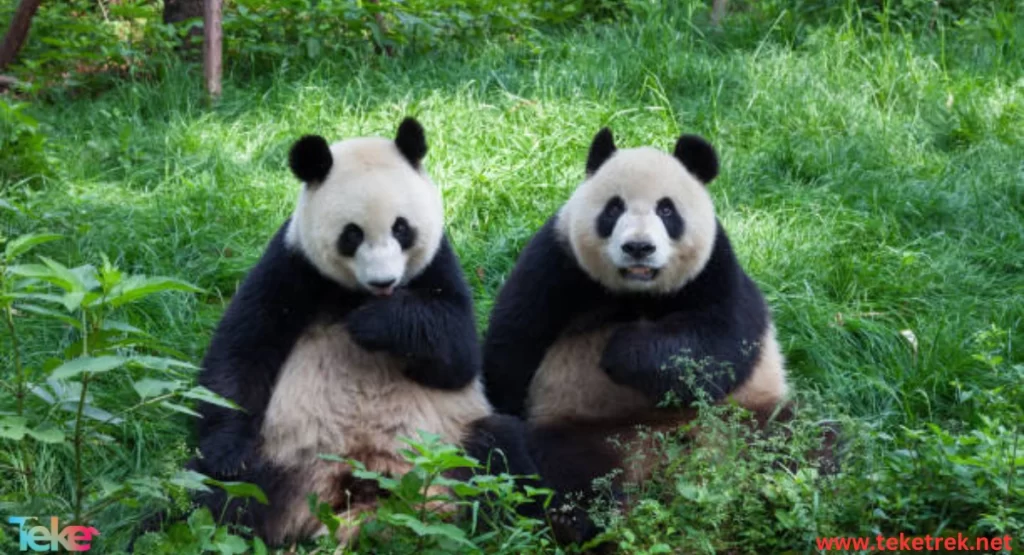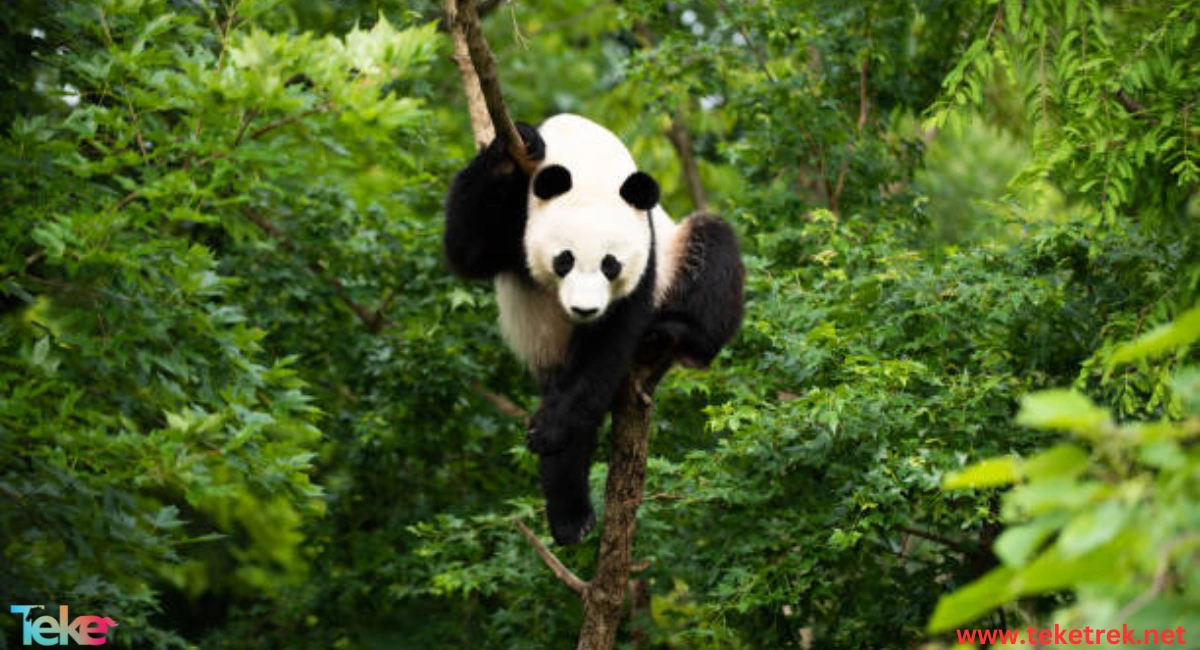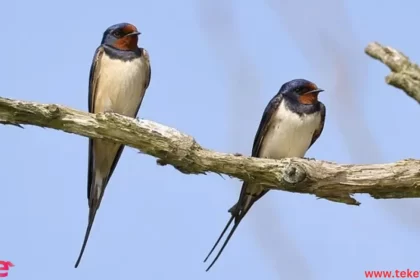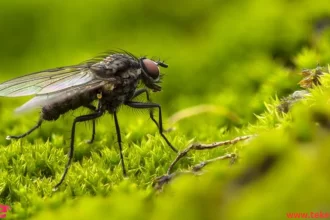In the depths of the mountainous forests in southwest China roams a rare creature, distinguished by its black and white fur, a symbol of beauty, peace, and biodiversity — the giant panda.
Despite its gentle appearance, this animal carries with it a long story of history, culture, science, and environmental challenges that have captivated humanity for decades. The panda is not just an animal, but an ambassador of nature that reflects the deep connection between humans and wildlife, and the ongoing efforts to protect it. Here are the details in this article from teketrek.
Origin and Distribution of the Panda Species Around the World:
The giant panda belongs to the bear family, yet it is distinguished by a unique lineage that emerged around two million years ago. Its original habitat lies in the mountains of Sichuan, Guizhou, and Yunnan in China. However, thanks to conservation and breeding efforts, it has spread to reserves and zoos in various countries such as the United States, Japan, and Germany under diplomatic agreements known as “Panda Diplomacy.”
https://teketrek.net/en/pet-care-in-winter-2/
History of Panda Discovery and Its Role in Chinese Culture:
The panda was first documented in ancient Chinese literature, where it was seen as a symbol of both strength and gentleness. Since the 20th century, it has attracted the attention of Western explorers and has become a national symbol of China. It is used to promote peace and environmental protection. As for its role in Chinese culture, it plays an important part in:
- Symbol of Peace and Gentleness: In China, the panda is considered a symbol of peace and gentleness. Unlike most bears known for their aggressiveness, the panda is calm and non-aggressive, and it does not consume meat. This made it an embodiment of the philosophy of harmony with nature in Confucian and Buddhist thought.
- National and Cultural Identity: The panda is now considered a national symbol of China, much like the eagle represents the United States. It is used in official emblems, sporting events, and environmental campaigns. The Chinese even refer to it as the “living national treasure.”
- Panda in Folklore and Mythology: Some Chinese folktales say that pandas were once entirely white until they cried in grief over the death of a girl who saved them. Their tears stained their fur black, creating the distinctive black patches.
- Traditional and Modern Arts: The panda frequently appears in traditional Chinese paintings, dolls, and crafts.
- In Modern Media: It has become a beloved cartoon character, appearing in many Chinese films that blend both Eastern and Western cultures.
- Panda Diplomacy: China has used pandas for diplomatic purposes since the Tang Dynasty. In modern times, it began gifting pandas to other countries as a symbol of friendship and international cooperation. One of the most famous instances was in 1972 when a pair of pandas was sent to the United States following President Nixon’s visit to Beijing.

Comparison Between the Panda and Other Bears:
The panda differs from other bear species mainly in its diet, as it relies on bamboo for 99% of its food. Other bears have more varied diets, including meat and plants. The panda also has a broad skull and strong teeth designed for chewing tough bamboo stalks, along with a calmer temperament compared to other bears.
Environmental Strategies to Face Challenges Threatening the Panda:
Giant pandas face several challenges that threaten their survival, most notably habitat loss, climate change, and low reproduction rates. To combat these, China and several environmental organizations have adopted a comprehensive strategy to protect this unique animal. The key strategies include:
- Establishing Nature Reserves and National Parks: Over 60 reserves have been designated in panda habitats. A Giant Panda National Park was launched to connect these reserves, facilitating genetic exchange and natural reproduction.
- Habitat Restoration: Efforts include planting bamboo and creating green corridors to connect isolated panda populations.
- Captive Breeding Programs: China has developed sophisticated programs that use artificial insemination and gradually prepare panda cubs for reintroduction into the wild.
- Use of Modern Technology: Satellite tracking and GPS devices are used to monitor pandas without disturbing them. Genetic research is also conducted to ensure diversity and reduce disease.
- Climate-Resilient Bamboo Planting: Special types of bamboo resistant to climate fluctuations are being cultivated to ensure a consistent food supply.
- Community Involvement: Local communities are engaged in conservation efforts through awareness and incentives for forest protection.
- Media and Environmental Campaigns: These help raise awareness of the panda’s significance as a symbol of biodiversity.
- International Collaboration: Research partnerships and panda exchanges contribute to global conservation efforts.

Facts About the Giant Panda:
- Pandas in Captivity: In reserves, pandas are provided with environments that mimic the wild, strict health monitoring, and planned diets. This has improved breeding success and allowed scientists to study them closely.
- Recreational Activities: Pandas in captivity engage in daily activities like playing with balls and climbing. These exercises help maintain their mental and physical health. Food puzzles are also used to stimulate their cognitive skills.
- Pandas in Media: The panda has become an environmental icon, featured in popular films like Kung Fu Panda and in awareness campaigns and fundraising efforts, increasing its popularity and drawing attention to its conservation.
- Role of Scientists and Researchers: With technological advances, scientists can track pandas’ movements via GPS and study their social behavior. Researchers play a crucial role in developing breeding strategies and maintaining genetic diversity.
- Psychological Effects of Panda Interaction: Interacting with pandas has a calming and joyful effect on people. Visitors often report feeling relaxed and happy when observing them, making the panda a symbol of emotional connection between humans and nature.
- Can Panda Populations Recover in the Wild? Although no longer considered endangered, panda numbers in the wild remain limited. Efforts to rehabilitate and reintroduce captive-born individuals continue but require long-term commitment.
- Difference Between Giant and Red Pandas: The giant panda belongs to the bear family, while the red panda is classified under the raccoon family. They differ in size, shape, and diet but share the bamboo habitat and face similar extinction threats.
- Impact of Climate Change: Climate change has reduced bamboo-growing areas, the panda’s main food source. Authorities have taken preventive measures, including planting heat-resistant bamboo varieties.
- Logistical Challenges of Transporting Pandas: Transporting pandas internationally requires precise medical care, suitable conditions during transit, special diets, and continuous health monitoring — all of which raise the cost of keeping pandas outside China.
- Scientific Advancements in Panda Breeding: Techniques like artificial insemination and genetic analysis have improved breeding success rates and expanded the species’ genetic diversity.
- Training Pandas in Reserves: Positive reinforcement is used to train pandas to cooperate during medical checkups, enter enclosures, and interact with their environment. Care is taken to avoid stress or excessive human interaction.
Conclusion:
The giant panda is more than just a beautiful creature — it is a story of global environmental struggle and triumph. It has inspired scientists, captured the hearts of millions, and urged humanity to be more mindful and protective of biodiversity. With ongoing efforts in research, care, and international collaboration, our hope remains strong that pandas will once again thrive in the wild — a symbol of life still worth fighting for.





